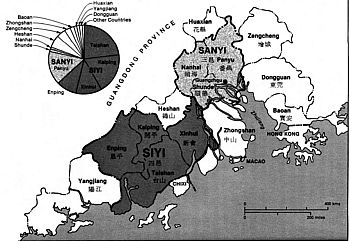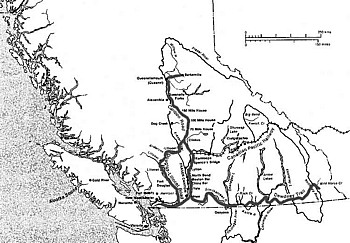|
Gold Mountain To the Chinese of the 19th century, North America was known as Gum Shan, or Gold Mountain. The reasons for this title are varied. Many Chinese were leaving China as poverty and warfare racked the country, making it difficult for them to have a traditional life at home. In some areas of China, there were over 1300 people per square kilometer of arable land, making poverty and starvation rampant. There were very few choices open to someone living in the region. You could try to make a living off the land, but possibly die of starvation, you could become a bandit and possibily die as a result of that, or you could pull up your roots and move somewhere else. To chinese who had been on ancestral land for centuries, the third would have been one of the most difficult. There was a good chance you would never see your friends and family again, and would not be able to come back and be buried with your ancestors3. With 20 million Chinese dead or displaced as a part of the Taiping Rebellion (1850-1865), there was very few choices of where you could go. If you came from Fuijan province, it was likely you could stay in South Asia. If you were from Guangdong province, your new home was likely in North America8. For years now, a few Chinese had been returning from the gold fields of California with stories about gold nuggets being easy for the taking, and the life of ease available in Gold Mountain. Returning to their ancestral lands with new found wealth, they caused a wave of immigration to North America. For the poverty stricken, would be immigrant, there was no choice but to turn to the corperations for a way to reach gold mountain. Actively recruiting in China, these companies would pay for the passage of Chinese workers with the agreement that they would work for the company until their debts were paid off. Working for poor wages, and having a large debt, it would take ten years or more for some of these miners to purchase their freedom from debt. And this was only possible if they reached North America3. Some ships were stricken with poor conditions for the trip to north america. Some ships only had one pound of rice shared for every ten people, and many people were jammed into cramped conditions to endure a stormy journey to North America. Neither fed nor clothed properly they would have to endure a 64 day journey just to make it there. Then working long days for poor wages, it would be ages until they managed to pay off their own debt, let alone get enough money together to sponsor the immigration of their wife, fiance, children, or parents to the new world3. It was not strange then that many took to opium smoking or gambling as ways to put off depression and misery.
The above map indicates the area of origin of some 5000 Chinese surveyed in 1884-5. Most of them came from Guangdon province, with 64% of those coming from Taishan, Kaiping, Xinhui, or Enping3.
The above shows the major routes to the gold fields, which Chinese as well as white miners would have taken. Chinese laborers were also responsible for making these rough trails into major arteries into the center of the province. |

